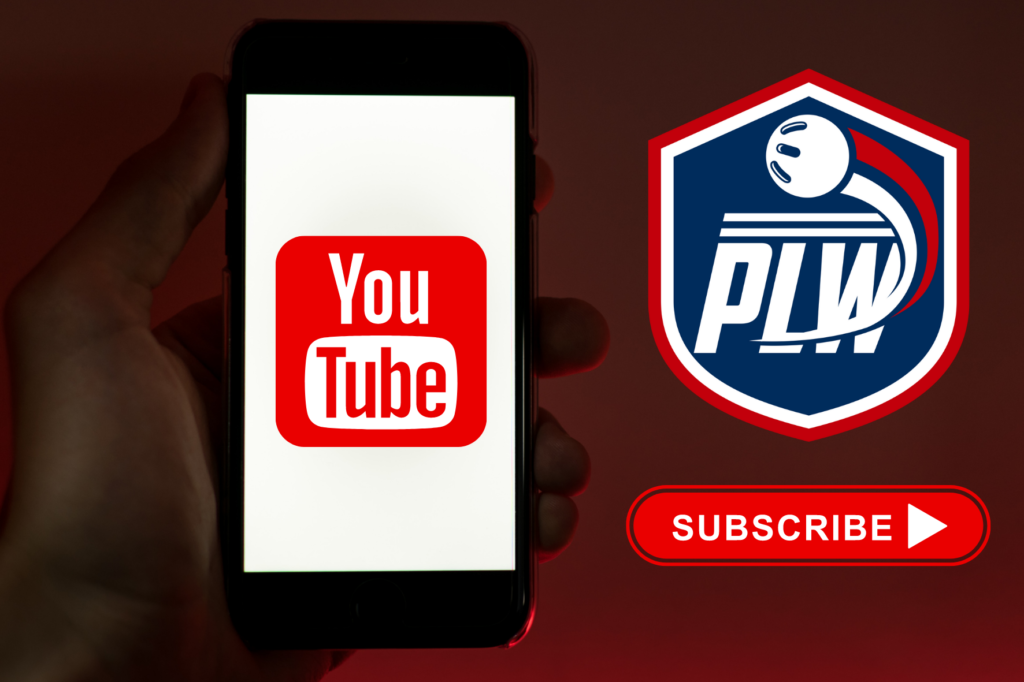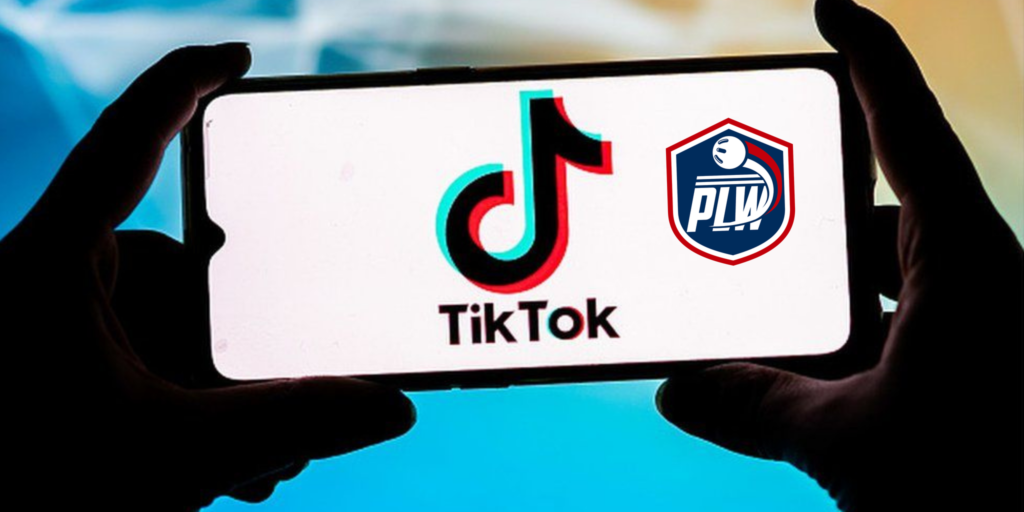OFFICIAL PREMIER LEAGUE WIFFLE® RULES
Season 6 Edition
Team Owners:
- Bombers: Alex Fernandez
- Night Owls: Beau Evans
- Legends: Brad Ogden
- The Ones: Adam Koutz & Scottez Dobbins
- Sandvipers: Adam Tanic
- Snappers: Taylor Bryner
- Cajuns: Andrew Ledet
- Pharaohs: Gio Battistoni & Alec Hutt & Ethan Ibarra
- Vaderz: Sesaí Alarcón
- Lightning: Chad Phillips
1.00 GENERAL
1.01 Teams may have up to 12 players on their roster.
1.02 Including the pitcher there are 6 fielders and 6-12 batters in the lineup.
1.03 A lineup may have 6 designated hitters, and batters may be added to the bottom of the lineup, but it can never be shortened.
1.04 Fielders may substitute freely in and out of the game even if they have been removed from the lineup, but a batter that is removed from the lineup may not hit or pinch-run for the remainder of the game.
1.05 Pitching changes and defensive substitutions may not be made during an at-bat, with the exception of an injury forcing a player to leave the game.
1.06 Fielders may not wear gloves of any kind. Bare hands only. Bandages/casts due to injury are allowed.
2.00 GAME STRUCTURE
2.01 Games are 6 innings. If the game is tied after the 6th inning, extra innings are played until there is a winner. A runner is placed on second base to start extra innings.
2.02 Game balls are new, or like new, official Wiffle® balls. Any ball that becomes deformed, dirty, or scuffed must be removed from play.
2.03 Only official original yellow Wiffle® bats may be used. Electrical tape, duct tape, athletic tape, painter’s tape, or masking tape may be added to the barrel, but only a 12 inch section of the barrel may be taped, and both ends of the bat must be uncovered. Stickers may be added, but may not overlap. The barrel must fit through a 2 inch schedule 40 PVC tee.
2.04 A 10 run mercy rule applies after 3 complete innings.
2.05 If a team scores their 15th run or more and they lead by at least 2 runs, the game ends in a mercy (even if they are the away team).
2.06 If the game ends on a walk-off hit that scores multiple runs, all runners advance, and the batter is credited with the result of their hit (e.g. a walk-off double with the bases loaded in a 0-0 game results in a 3-0 win).
3.00 GAMEPLAY
3.01 At-bats begin with an 0-1 count.
3.02 Pitches must read 55 mph or below on the PocketRadar™ and hit the ꓘ zone (in the air) for a called strike. A pitch that does not read on the radar in a called strike situation will be ruled “no-pitch” unless umpires agree the pitch was clearly and obviously under 50 mph (strike) or over 60 mph (ball).
3.03 A batter hit by the pitch is considered a ball unless it hits the batter in the face, and reads 65 mph or higher on the PocketRadar™, or hits the batter’s hands while they are holding the bat. The batter’s hands are considered part of the bat while they are holding the handle. A HBP counts toward the pitcher’s walk total.
3.04 The batter must attempt to avoid being hit by a pitch. If the batter interferes with a pitch that may have hit the ꓘ zone (at 55 mph or below), the pitcher may appeal to an umpire. A strike, or a “no-pitch” may be called at the umpires discretion.
3.05 There is no balk rule, however the delivery must be made in a fluid motion (no pump fakes). An illegal pitch may be called by the umpire using the following criteria:
- a) A pitcher’s pivot (back) foot must stay connected with the pitching rubber up until the moment of release. The pitcher may not hop, jump, lunge, or slide forward from the pitching rubber prior to the action of releasing the ball.
- b) A pitcher’s plant foot (front foot) must land on the pitching mat. The pitcher’s entire front foot must land off the mat to be called for an illegal pitch under this rule.
Consequences for an illegal pitch are as follows (per pitcher, per series):
- First infraction – A warning will given and the pitch shall be ruled “no pitch”.
- Second infraction – The pitch shall be ruled an automatic ball.
- Additional infractions – A base-on-balls will be issued and will count toward the pitcher’s walk total.
3.06 A pitcher is ineligible to pitch for the remainder of the game after they walk 2 batters. The last eligible pitcher on a team has no walk limit.
3.07 In a 3 game series, a different pitcher must start each game.
3.08 In a 3 game series, a pitcher may appear (throw a pitch) in up to 9 innings. If a pitcher throws a pitch in a 10th inning, all outs recorded become walks, and if the inning is complete it results in a forfeit.
3.09 If a pitcher starts a game with 0 innings pitched and throws every pitch in the game, they may continue pitching past the 9th inning until they walk 2 batters.
3.10 If the batter foul tips the ball into the ꓘ zone twice with 2 strikes it is a strikeout.
3.11 A pitch that goes out of play without touching the ꓘ zone, backstop or batter is a wild pitch. Directly over the top of the backstop is considered out of play, but the area to the sides of the backstop is not considered out of play. Runners advance 1 base on a wild pitch. (no additional bases if it is ball 4).
3.12 If the batter hits the ꓘ zone with their bat during a swing or check-swing, it is ruled a swing, but any ball put in play remains in play.
3.13 A front foul line or “cheap line” connects the first base and third base foul lines. The area behind the line (toward home plate) is considered foul territory.
3.14 Pylons are placed one ball length away from first and third base to determine fair/foul. If a batted ball hits the pylon before reaching the outfield it is foul. A ball deflected into the pylon by a fielder is live.
3.15 Fielders may not intentionally use their feet to stop the ball unless they are sliding in the outfield. The pitcher may use their foot to deflect a ball directly back to them.
3.16 Runners are placeholders unless they are tagging up from third base. They must stand within 10 feet of the base they are occupying, and must avoid fielders making a play. An interference call will result in the batter being out, and no runners advance.
3.17 Fielders may not be positioned closer to home plate than the pitcher.
3.18 The batter must stand inside the batter’s box, but may step out of the box while swinging.
4.00 FIELDING / ADVANCING RUNNERS
4.01 A fielder must hit the backstop or ꓘ zone with the ball (in the air) less than 5 seconds after the batter makes contact to record a force out at first base or home plate. If a batter is in front of the backstop, they are considered part of the ꓘ zone. The bottom pole of the ꓘ zone, and any balls near the backstop are considered part of the ground. If the ball rolls behind the batting mat the ball is dead, and no further outs may be recorded.
4.02 Fielders may tag second and third base in less than 5 seconds to record a force out when applicable. With the bases loaded and no outs, a double play throw that hits the ꓘ zone gets the runner out at home (tag play). Fielders may not run toward the backstop with the ball.
4.03 Forced runners advance 1 base on a ground out. Runners that are not forced hold on a ground out unless a double play is attempted.
4.04 If the ball stays in the infield and no outs are recorded, runners advance 1 base, and the batter goes to first base.
4.05 If a fair ball bounces out of play before reaching the outfield fence without being touched by a fielder, no further outs may be recorded, all runners advance 2 bases, and the batter goes to first base.
4.06 If a fair ball goes out of play, without hitting the ꓘ zone, backstop or batter, all runners advance 2 bases, and the batter goes to second base. If there is no play left to make, extra bases are not awarded for a throw out of play.
4.07 If a fair ball hits the ground and then touches the fence all runners score and the batter goes to second base (except in the case of a ground-rule double where the runner from first base will hold at 3rd.)
4.08 If the ball hits the fence in the air, all runners score, and the batter goes to third base.
4.09 If the ball goes over the fence in the air, all runners and the batter score.
4.10 If a fielder has possession of the ball and holds it against the fence or outfield grass, extra bases are not awarded, and the ball is still live.
4.11 If a tagging runner from third base steps over the commit line after a fly out, a fielder may hit the backstop, the ꓘ zone, or the runner with the ball before they touch home plate to record a double play (does not have to be in the air). Runners may not cross the commit line after the pitcher has the ball on the pitching mat.
4.12 If a fielder throws/deflects the ball out of play without hitting the ꓘ zone, backstop, batter, or runner in a tag up situation, all runners advance 1 base.
4.13 Holding Runners. Fielders now have the option to hold the runner(s) to one base by:
- Throwing the ball to 3rd base in under 5 seconds. Runner stops at 2nd base.
- Throwing the ball to the backstop (in the air) in under 5 seconds. Runner stops at 3rd base.
- When there are runners at 1st and 2nd, a throw to the backstop (in the air) in under 5 seconds will hold both runners and 2nd and 3rd.
- When there are runners are 1st and 2nd, a throw to 3rd base will only hold the runner at 2nd base. The runner from 2nd base will still score.
Any rule not stated herein will refer to the official 2021 Major League Baseball rulebook when applicable.
This is including, but not limited to:
APPENDIX: Baseball rules that apply to Wiffle®
-Pitchers must face at least 3 batters, or finish the inning when they enter a game.
-Pitchers do not have to throw a pitch to intentionally walk a batter.
-Fair and foul is determined by where the ball lands if it is behind the bases.
-If a fielder touches a batted ball before fair/foul is determined, it is ruled based on where the ball is located when the fielder makes contact with the ball (if any fraction of the ball is on or above any fraction of the foul line, it is a fair ball).
-Pitchers may not wear sleeves that are white, gray, or have a distracting pattern.
-The pitcher must wait until the batter is set in the box, and looking at them before delivering a pitch. The penalty for an illegal quick pitch is an automatic ball.
-All fielders must be positioned on the ground in fair territory.
-Fielders may not intentionally distract the batter.
-Fielders must secure the ball before any part of their body touches the ground, or a grounded structure (i.e. a stadium seat) that is out of play in order to record an out.
-Members of the batting team must vacate any space needed by a fielder to make a play.
-If the batter, or anyone on the batting team, interferes with a batted ball that has a chance of rolling fair, the batter is out, and no runners advance. The batting team must wait for foul balls to come to a complete stop, or hit something in foul territory before picking them up.
-If a team bats out of order, and it is realized during the at-bat, the correct batter will assume the count, and they will continue the at-bat. If the at-bat is over, the correct batter that was supposed to be up is ruled out, and the following batter is up. If the wrong batter becomes a runner or is put out, and a pitch is thrown to the next batter of either team before an appeal is made, the batter becomes the correct batter, and the result of the at bat becomes legal.
-If a player exits the game, and there is not a legal substitute on their team to take their spot in the lineup, an out will be taken every time their spot in the lineup comes up.
-The batter, and all runners are awarded 3 bases if a fielder deliberately touches a fair ball with their cap, jersey, or any part of their uniform detached from its proper place.
-If a runner is hit by a batted ball in fair territory before it is touched by a fielder, they are out and the batter is awarded a single. Runners only advance if forced.
-A batter may switch batters boxes in an at-bat 1 time, but they may not do so after the pitcher has begun their motion.
-If a batter uses an illegal bat, they will be declared out. No runners advance, and any outs made during the play stand.
-Pitchers may not switch pitching hands during an at-bat. If a pitcher switches pitching hands during an at-bat due to an injury, they may not pitch with their injured hand for the remainder of the series, and they may not throw warm-ups.
-If the ball bounces over the fence, or out of play, it is a ground rule double. All runners and the batter advance two bases.
-A foul tip must be sharp and direct off the bat.
-A hit off the foul pole (above the fence line) is a home run.
-The pitcher may only have 1 ball.
-3 strikes for a strikeout, 4 balls for a walk.
-If a fielder catches a batted ball before it hits the ground, backstop, ꓘ zone, fence, chair, etc. the batter is out.
-3 outs per half-inning.



